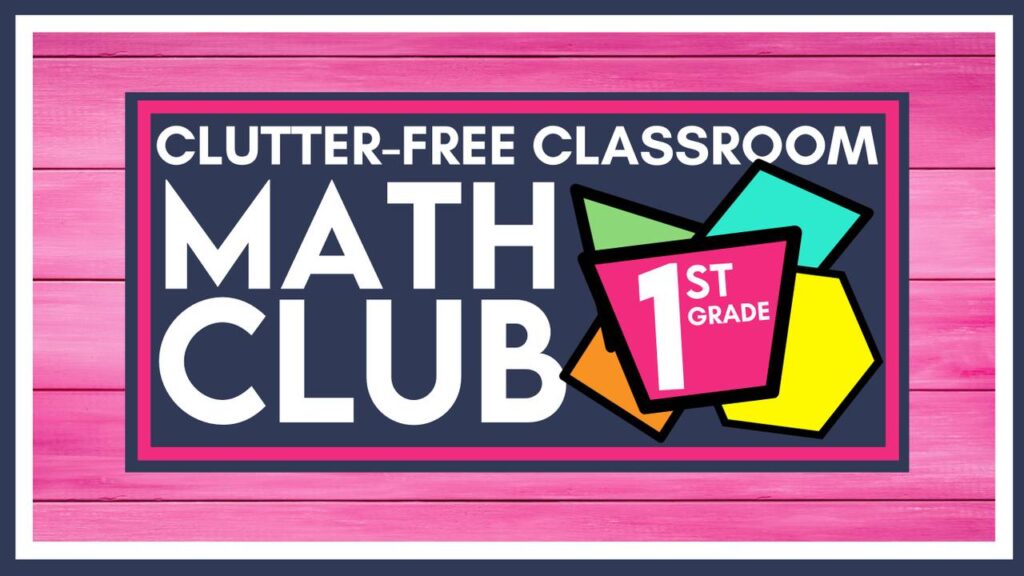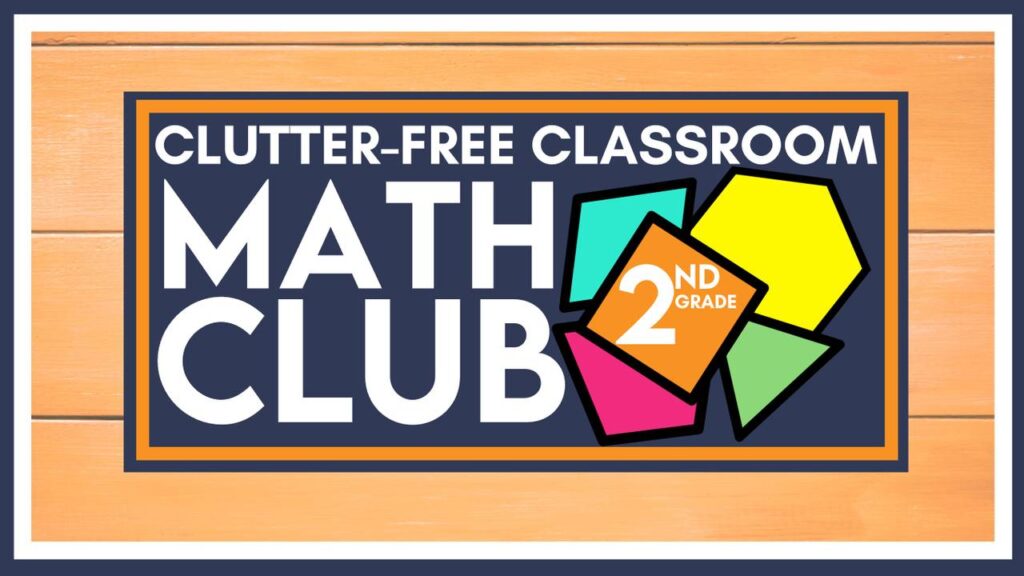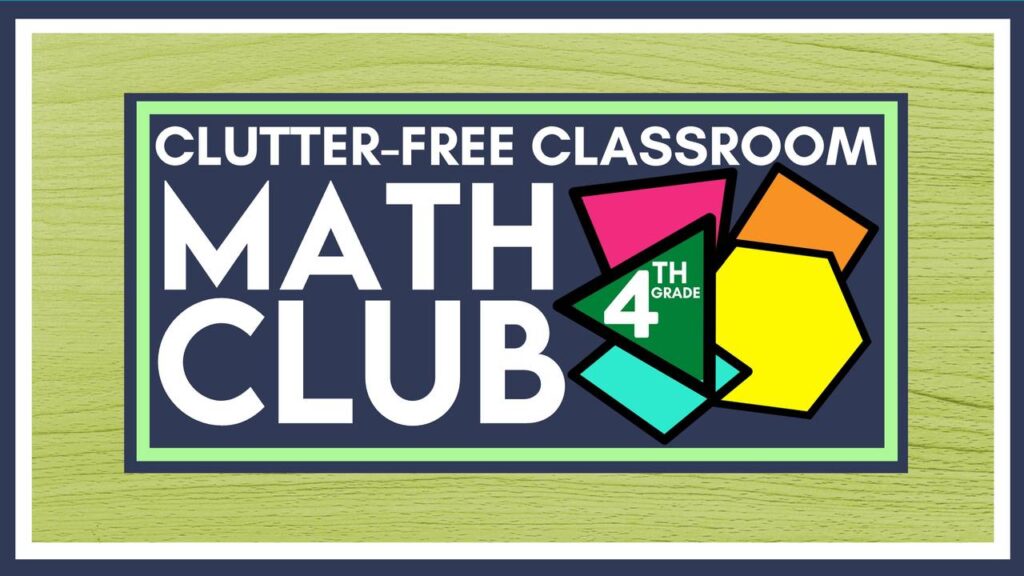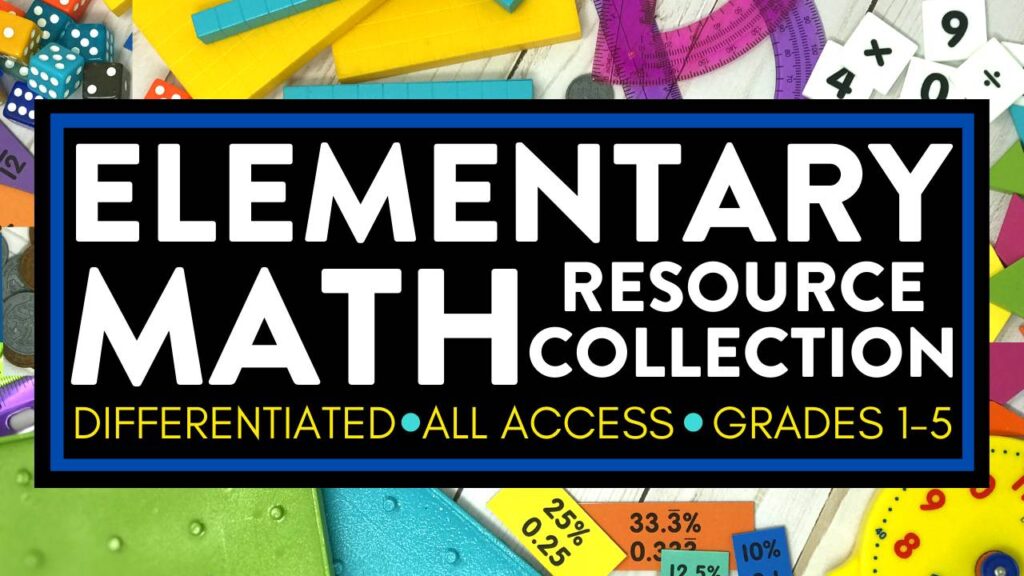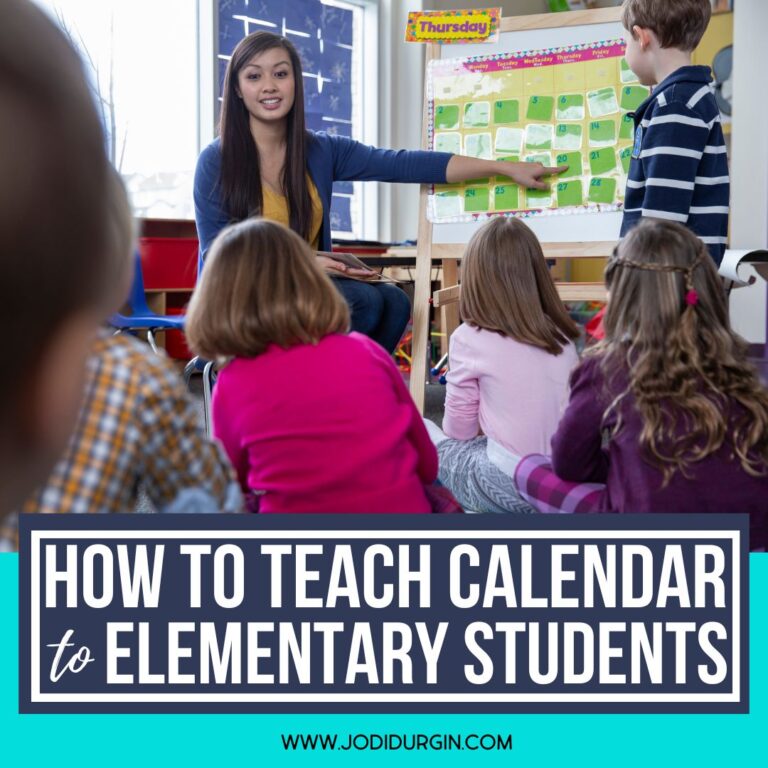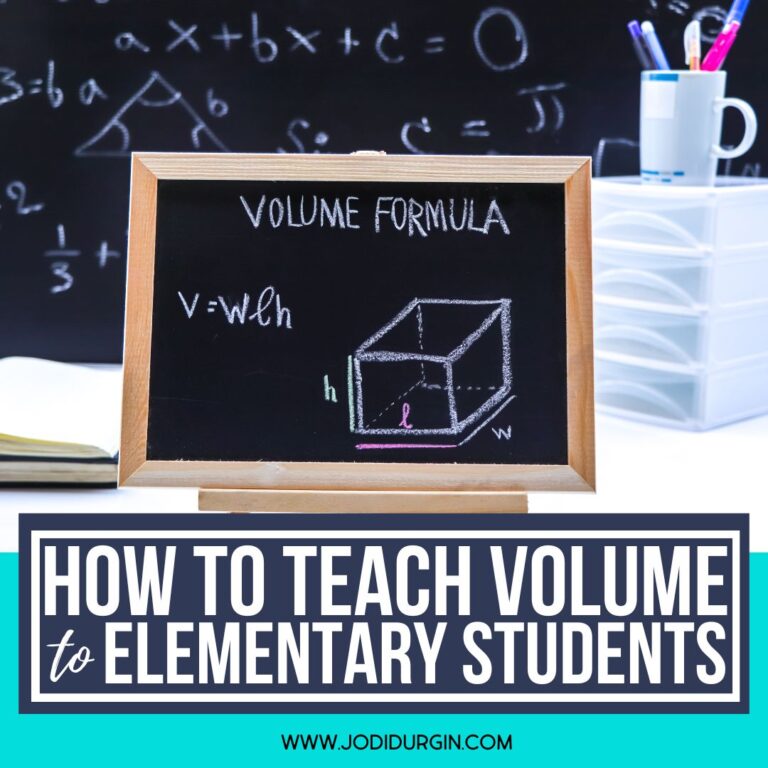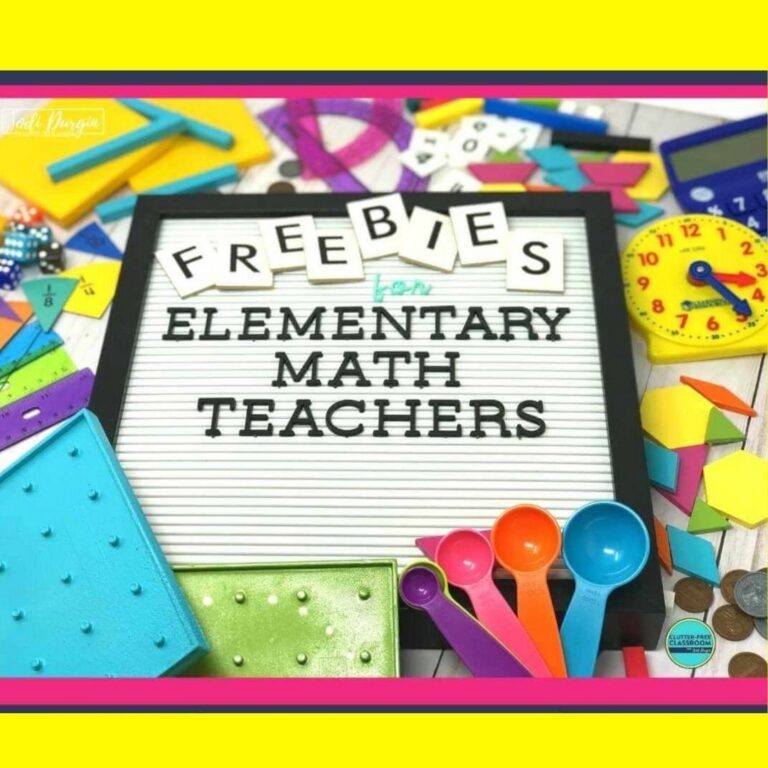If you are an elementary teacher looking for tips and ideas for how to teach measurement, then you found the right place! Learn what measurement is, why it’s important, what your students need to know, and get 5 helpful tips for teaching it in a fun and engaging way. Read all about teaching measurement below!
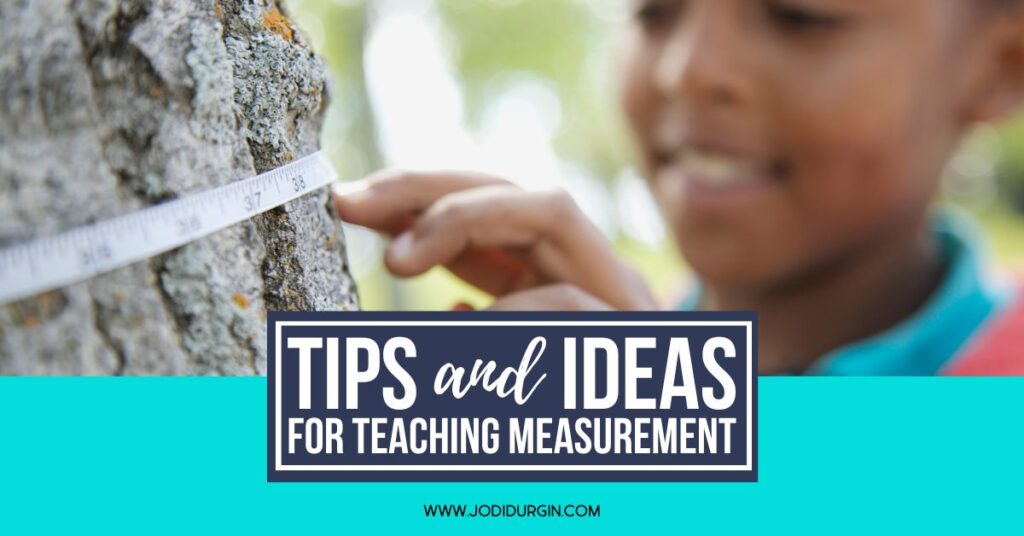
What is Measurement?
Measurement shows the size or amount of something. A measurement is made by comparing a quantity with a standard unit. During their time in elementary school, students explore the Metric System and Imperial System.
Why is Measurement Important?
It is important for students to learn measurement because it is an important skill used in our everyday lives. For example, we often measure time, temperature, distance, speed, and weight to navigate daily life.
What Measurement Skills Do Students Need to Know?
Below are the Common Core and TEKs standards that relate to measurement that define what students should be able to do by the end of the school year.
Common Core Standards
Below are the CCSS related to how to teach measurement.
1st Grade
- Order three objects by length; compare the lengths of two objects indirectly by using a third object. (1.MD.A.1)
- Express the length of an object as a whole number of length units, by laying multiple copies of a shorter object (the length unit) end to end; understand that the length measurement of an object is the number of same-size length units that span it with no gaps or overlaps. Limit to contexts where the object being measured is spanned by a whole number of length units with no gaps or overlaps. (1.MD.A.2)
2nd Grade
- Measure the length of an object by selecting and using appropriate tools such as rulers, yardsticks, meter sticks, and measuring tapes. (2.MD.A.1)
- Measure the length of an object twice, using length units of different lengths for the two measurements; describe how the two measurements relate to the size of the unit chosen. (2.MD.A.2)
- Estimate lengths using units of inches, feet, centimeters, and meters. (2.MD.A.3)
- Measure to determine how much longer one object is than another, expressing the length difference in terms of a standard length unit. (2.MD.A.4)
- Use addition and subtraction within 100 to solve word problems involving lengths that are given in the same units, e.g., by using drawings (such as drawings of rulers) and equations with a symbol for the unknown number to represent the problem. (2.MD.B.5)
3rd Grade
- Measure and estimate liquid volumes and masses of objects using standard units of grams (g), kilograms (kg), and liters (l). Add, subtract, multiply, or divide to solve one-step word problems involving masses or volumes that are given in the same units, e.g., by using drawings (such as a beaker with a measurement scale) to represent the problem. (3.MD.A.2)
4th Grade
- Know relative sizes of measurement units within one system of units including km, m, cm; kg, g; lb, oz.; l, ml; hr, min, sec. Within a single system of measurement, express measurements in a larger unit in terms of a smaller unit. Record measurement equivalents in a two-column table. For example, know that 1 ft is 12 times as long as 1 in. Express the length of a 4 ft snake as 48 in. Generate a conversion table for feet and inches listing the number pairs (1, 12), (2, 24), (3, 36), … (4.MD.A.1)
- Use the four operations to solve word problems involving distances, intervals of time, liquid volumes, masses of objects, and money, including problems involving simple fractions or decimals, and problems that require expressing measurements given in a larger unit in terms of a smaller unit. Represent measurement quantities using diagrams such as number line diagrams that feature a measurement scale. (4.MD.A.2)
- Make a line plot to display a data set of measurements in fractions of a unit (1/2, 1/4, 1/8). Solve problems involving addition and subtraction of fractions by using information presented in line plots. For example, from a line plot find and interpret the difference in length between the longest and shortest specimens in an insect collection. (4.MD.B.4)
5th Grade
- Convert among different-sized standard measurement units within a given measurement system (e.g., convert 5 cm to 0.05 m), and use these conversions in solving multi-step, real world problems. (5.MD.A.1)
- Make a line plot to display a data set of measurements in fractions of a unit (1/2, 1/4, 1/8). Use operations on fractions for this grade to solve problems involving information presented in line plots. For example, given different measurements of liquid in identical beakers, find the amount of liquid each beaker would contain if the total amount in all the beakers were redistributed equally. (5.MD.B.2)
TEKS
Below are the TEKS related to how to teach measurement.
1st Grade
- Use measuring tools to measure the length of objects to reinforce the continuous nature of linear measurement; (1.7A)
- Illustrate that the length of an object is the number of same-size units of length that, when laid end-to-end with no gaps or overlaps, reach from one end of the object to the other; (1.7B)
- Measure the same object/distance with units of two different lengths and describe how and why the measurements differ; (1.7C)
- Describe a length to the nearest whole unit using a number and a unit; (1.7D)
2nd Grade
- Find the length of objects using concrete models for standard units of length; (2.9A)
- Describe the inverse relationship between the size of the unit and the number of units needed to equal the length of an object; (2.9B)
- Determine the length of an object to the nearest marked unit using rulers, yardsticks, meter sticks, or measuring tapes; (2.9D)
- Determine a solution to a problem involving length, including estimating lengths; (2.9E)
3rd Grade
- Determine when it is appropriate to use measurements of liquid volume (capacity) or weight. (3.7D)
- Determine liquid volume (capacity) or weight using appropriate units and tools. (3.7E)
4th Grade
- Identify relative sizes of measurement units within the customary and metric systems; (4.8.A)
- Convert measurements within the same measurement system, customary or metric, from a smaller unit into a larger unit or a larger unit into a smaller unit when given other equivalent measures represented in a table; and (4.8.B)
- Solve problems that deal with measurements of length, intervals of time, liquid volumes, mass, and money using addition, subtraction, multiplication, or division as appropriate. (4.8.C)
5th Grade
- Solve problems by calculating conversions within a measurement system, customary or metric. (5.7.A)
- Represent categorical data with bar graphs or frequency tables and numerical data, including data sets of measurements in fractions or decimals, with dot plots or stem-and-leaf plots; (5.9.A)
5 Tips for How to Teach Measurement
Below are 5 helpful tips for teaching measurement to elementary students.
1. Read Aloud Picture Books that Teach Measurement
Reading aloud picture books is a great way to integrate literacy into your math block and present information in a different way. Our favorite picture books for teaching measurement are How Big is a Foot? by Rolf Myller, How Long or How Wide: A Measuring Guide by Brian P. Cleary and How Long is a Whale? by Alison Limentani. Check out the full list of math picture books we recommend!
2. Offer Hands On Learning Experiences
Hands-on math experiences help students make connections, remember their learning, and develop a deep conceptual understanding of the content. You can make any lesson interactive and engaging by offering math manipulatives. Our favorite math manipulatives for teaching measurement are tape measures, rulers, meter sticks and yardsticks.
3. Explicitly Teach Related Math Vocabulary
Teaching math vocabulary is essential for all students, but it is especially beneficial for students who speak English as a second language and students with learning differences. Key vocabulary terms for measurement are order, compare, longer, shorter, difference, length, object, gap, overlap, units of measurement, length unit, measure, linear measurement, measuring tape, meter stick, yardstick, ruler, unit of measurement, standard unit, nonstandard unit, centimeter, meter, foot, inch, yard, compare, estimate, solution, length, result, open number line, Metric System, Imperial System, fluid, solid, liquid volume, capacity, mass, weight, gram (g), kilogram (kg) and liter (L).
4. Give Students Opportunities to Apply Measurement to the Real World
Learning becomes more meaningful when students understand how it connects to the real world. Students are more engaged and invested in their learning. Some examples of ways we use measurement in the real world are to determine if we are tall enough to ride on a roller coaster, if our new toaster oven is small enough to fit on our counter, or what the distance is to our best friend’s house. Project based learning and word problems are examples of opportunities for students to apply their learning to real world situations.
5. Encourage Parent Involvement
Parent participation in math is essential because it impacts students’ attitude toward math, proficiency levels this school year, and future success in their math education. Be sure to keep communication open with families and share ways they can support their children in their math learning. Some examples of ways they can practice measurement at home are determining the amount of milk required for a recipe, how much water is needed to fill a swimming pool, how much water we need every day in our diets, the load limit of a bridge, how many people are allowed on an elevator and the price of our produce at the grocery store.
In closing, we hope you found this information about how to teach measurement helpful!

